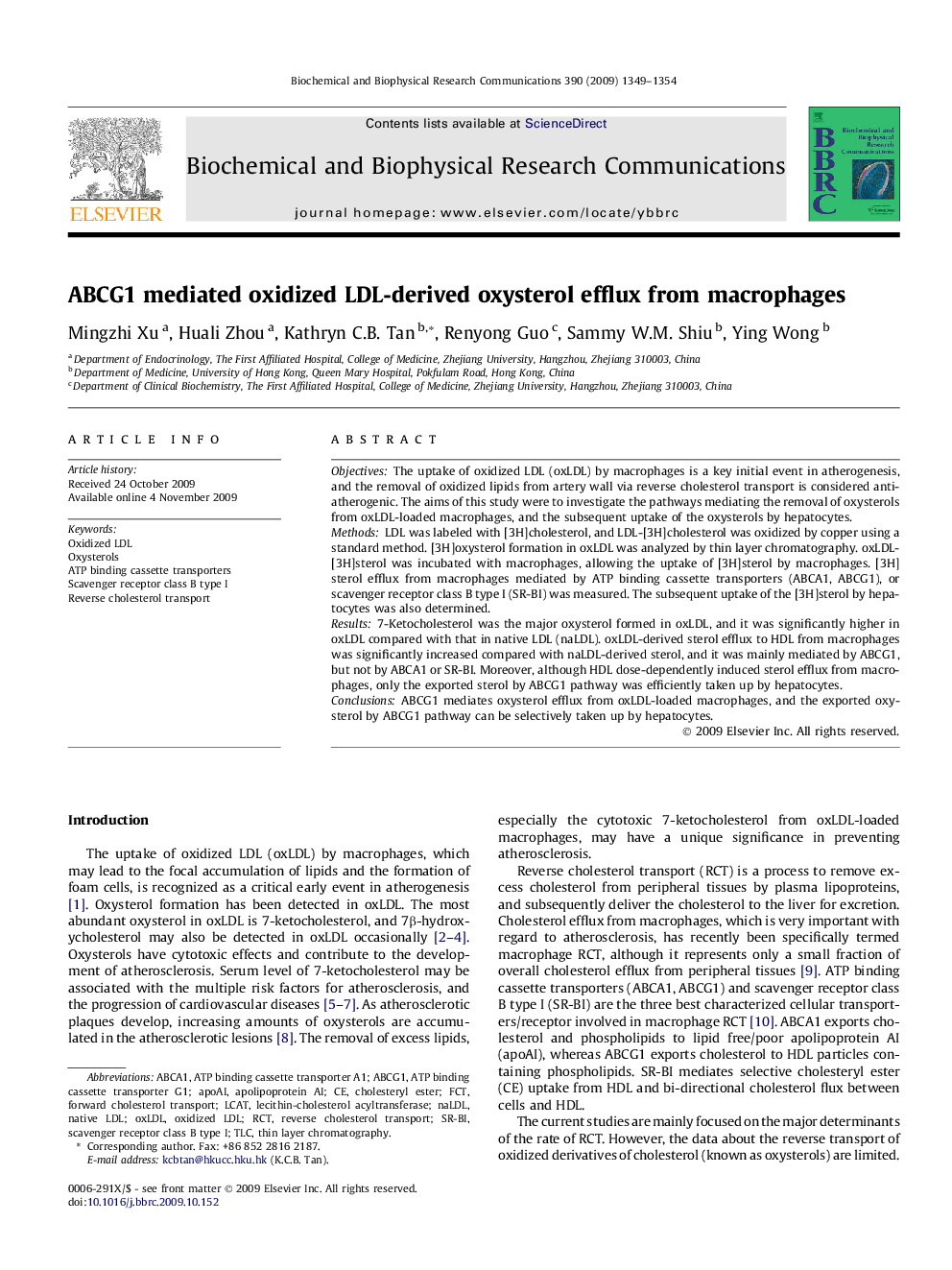| Article ID | Journal | Published Year | Pages | File Type |
|---|---|---|---|---|
| 1932606 | Biochemical and Biophysical Research Communications | 2009 | 6 Pages |
ObjectivesThe uptake of oxidized LDL (oxLDL) by macrophages is a key initial event in atherogenesis, and the removal of oxidized lipids from artery wall via reverse cholesterol transport is considered antiatherogenic. The aims of this study were to investigate the pathways mediating the removal of oxysterols from oxLDL-loaded macrophages, and the subsequent uptake of the oxysterols by hepatocytes.MethodsLDL was labeled with [3H]cholesterol, and LDL-[3H]cholesterol was oxidized by copper using a standard method. [3H]oxysterol formation in oxLDL was analyzed by thin layer chromatography. oxLDL-[3H]sterol was incubated with macrophages, allowing the uptake of [3H]sterol by macrophages. [3H]sterol efflux from macrophages mediated by ATP binding cassette transporters (ABCA1, ABCG1), or scavenger receptor class B type I (SR-BI) was measured. The subsequent uptake of the [3H]sterol by hepatocytes was also determined.Results7-Ketocholesterol was the major oxysterol formed in oxLDL, and it was significantly higher in oxLDL compared with that in native LDL (naLDL). oxLDL-derived sterol efflux to HDL from macrophages was significantly increased compared with naLDL-derived sterol, and it was mainly mediated by ABCG1, but not by ABCA1 or SR-BI. Moreover, although HDL dose-dependently induced sterol efflux from macrophages, only the exported sterol by ABCG1 pathway was efficiently taken up by hepatocytes.ConclusionsABCG1 mediates oxysterol efflux from oxLDL-loaded macrophages, and the exported oxysterol by ABCG1 pathway can be selectively taken up by hepatocytes.
